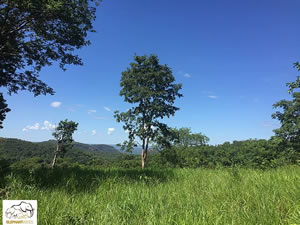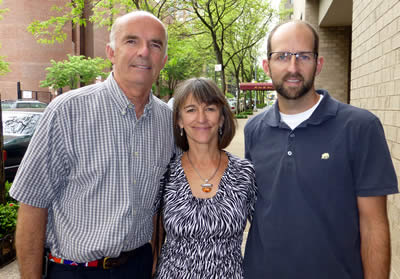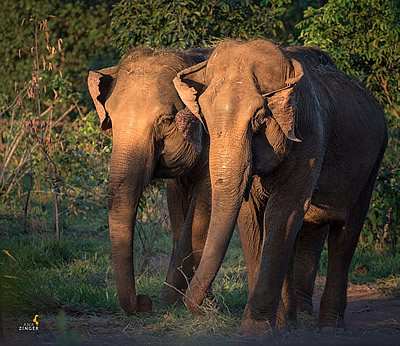In 2010, together with Junia Machado and other elephant friends in Brazil, ElephantVoices began working for the interests of captive elephants in Brazil and the South American continent as a whole. Part of our effort was to promote and support progressive legislation to end the antiquated practice of performing elephants.
 We stated our objectives as:
We stated our objectives as:
To create awareness about elephant conservation and the welfare needs of captive elephants in Brazil, and to ensure that a sanctuary for elephants in Brazil and elsewhere in South-America is established.
One might ask, Why Brazil?
During the launch of this initiative we declared that Brazil offers: a perfect climate for elephants; the possibility of obtaining a suitable sized parcel of land with habitat permitting natural foraging and social behavior; the potential to provide a home to the many captive elephants who are suffering in South America; the presence of a team of energized, committed people who want to work hard for the best interest of elephants.
The dire need for an alternative to life in circuses
To get a sanctuary in Brazil up and running was key to discussions about how to end the suffering of elephants currently in circuses and inadequate zoos. Without a good alternative in place for elephants in need of a new home, it would have been difficult to move forward the political process and other challenges in regard to such an ambition.
| In August 2010 Joyce and Petter had a video-conference with Ricardo Tripoli - a Representative in the Congress of Brazil. The objective of this meeting was to create an alliance between ElephantVoices and Congressman Tripoli to help approve the suggested ban of use of animals in circuses throughout Brazil.
ElephantVoices Brasil - Junia and her team of volunteers - continued to gather information about captive elephants in Brazil, and elsewhere in South America, many of whom are kept under terrible conditions. They found that there were about 24 elephants held in Brazilian zoos, and a few held in circuses or chained on rural properties. The total number was estimated to be between 35 and 40 elephants. One of the performing circus elephants, Semba, died in 2012. Another, Lady, was more recently donated to a small zoo, due to the increasing pressure against the use of animals in Brazilian circuses. In late 2011, in collaboration with Peter Stroud, ElephantVoices launched a document, which outlined our perspectives and overall pinciples on the meaning of Sanctuary for Elephants. Furthermore we had initial discussions with Peter about a possible elephant sanctuary in South America. |
The video from the 2010 Ricardo Tripoli conference with ElephantVoices' Joyce and Petter is produced by Tripoli's office. The above version has subtitles in Portuguese - click here to watch English version. |
The work with this partly drew on the experience of and communication with The Elephant Sanctuary (TES), Performing Animal Welfare Society (PAWS), Elephant Nature Park, Cambodia Wildlife Sanctuary.
Moving forward toward a benchmark Sanctuary
 In early 2013 we met with Scott Blais (Co-Founder of The Elephant Sanctuary in Tennessee) in New York, and discussed what it would take to bring an elephant sanctuary in Brazil to fruition. Later in 2013 Scott and Kat Blais established Global Sanctuary for Elephants as a US non-profit, with ElephantVoices as a founding partner. Meanwhile, with Junia as a vital force, Santuário de Elefantes Brasil was established as an organization in Brazil with Junia as President. These were major steps toward a groundbreaking venture.
In early 2013 we met with Scott Blais (Co-Founder of The Elephant Sanctuary in Tennessee) in New York, and discussed what it would take to bring an elephant sanctuary in Brazil to fruition. Later in 2013 Scott and Kat Blais established Global Sanctuary for Elephants as a US non-profit, with ElephantVoices as a founding partner. Meanwhile, with Junia as a vital force, Santuário de Elefantes Brasil was established as an organization in Brazil with Junia as President. These were major steps toward a groundbreaking venture.
In December 2013, Scott and Kat and Junia went on a study tour in Brazil to look for suitable properties. The search continued for two years during which Petter twice joined them. In June 2015, Santuário de Elefantes Brasil reached  another key milestone with the purchase of a stunning 2800 acre property in Chapada dos Guimarães, Mato Grosso. Global Sanctuary for Elephants posted this presentation. Since then major efforts have been put into fundraising and the construction of the first phases of buildings and fences on the property.
another key milestone with the purchase of a stunning 2800 acre property in Chapada dos Guimarães, Mato Grosso. Global Sanctuary for Elephants posted this presentation. Since then major efforts have been put into fundraising and the construction of the first phases of buildings and fences on the property.
The first Elephants arrive
We were humbled, touched and proud when the Sanctuary received its first two elephants, Maia and Guida, in October 2016, which created headlines around the world. You'll find quite a few through a search on Google - "Brazil opens Latin America's first elephant sanctuary".
Rana arrived at the Sanctuary just before Christmas 2018. She spent 40 years on the road with a circus. On 18 October 2019 Ramba came to sanctuary, after a long journey from Chile. Also she had spent around 40 years in a circus, having been kept alone most of her life.
Visit Global Sanctuary for Elephants, and follow GSE on Facebook or Santuário de Elefantes Brasil on Instagram to learn more about those already in sanctuary, and others to come.

Petter, Junia, Scott and Kat on the ESB property in January 2016. (©ElephantVoices).
|
Before: Together with Guida, both in their mid forties, Maia lived in Minas Gerais from 2010 to 2016, where they were chained all day. Before this they spent their days travelling in a circus. Footage: Santuário de Elefantes Brasil, May 2016. After: Sweet Guida died in June 2019. She suffered a lot through her life in captivity - her time in sanctuary became far too short.
|
The little film above from the Sanctuary in November 2016 shows some interesting tool use by Maia. Using her trunk she manipulates a stick so that she can scratch her tummy efficiently. Later in the video Maia and Guida shows how two big elephants can use their bodies to scratch and massage one another in a truly compassionate way. |


